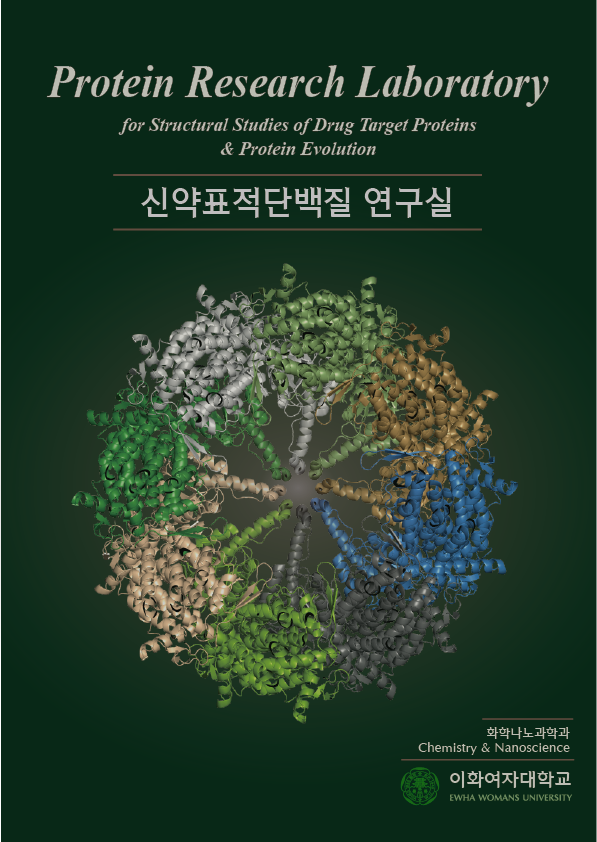Our Lab
Our Lab
Introduction
Welcome! :)
About us
Our laboratory, located in the Science building D, belongs to the Department of Chemistry and Nanoscience. Our research is devoted to crystallographic analyses of proteins for structure-based functional investigation. We place much value on public contribution rather than personal achievements in our research.

Recent major discoveries
Antibiotic resistance: β-Lactamases that are classified into four classes (A, B, C and D) based on their amino acid sequences inactivate β-lactam antibiotics. Thus one working strategy to combat β-lactamase-mediated drug resistance is the combination of β-lactam antibiotics with β-lactamase inhibitors (BLI). We have discovered nucleotides, building blocks of genetic materials, inhibit class C β-lactamases that are in part responsible for the current crisis related to antibiotic resistance. In terms of the chemical structure and the binding mode, nucleotides are different from existing BLIs. Therefore, our findings may open a window for developing nucleotide-based BLIs that could escape bacterial resistance mechanisms adapted to existing BLIs.
ATP-fueled protein machines: Proteins mediate nearly all the biochemical reactions in cells and thus the proper protein folding is essential for the survival of cells. Accumulation of misfolded and denatured proteins is engaged in the progression of several diseases including neurodegeneration and cancer. Chaperonins (CPNs) play critical roles in proper folding of nascent proteins or in refolding of denatured proteins. CPNs are multi-subunit complexes that have a folding chamber, and ATP-hydrolysis allosterically affects the conformation of CPNs to facilitate folding process. We have determined two crystal structures of a novel CPN to depict the molecular mechanism underpinning the mechanical motion of this protein machine.
Discovery of the unique thermal behavior of FGF21 & Development of heating-mediated purification of active FGF21 & Structure-based design of its variant with enhanced potency: Fibroblast growth factor 21 (FGF21) has pharmaceutical potential against obesity-related metabolic disorders, including non-alcoholic fatty liver disease (NAFLD) and steatohepatitis (NASH). Since thermal stability is a desirable factor for therapeutic proteins, we investigated the thermal behavior of human FGF21. We first discovered 'temperature-responsive structural reversibility' of FGF21, which led to the development of heating-mediated purification. According to surface plasmon resonance experiments, in vitro cell-based assays, and model high-fat diet (HFD)-induced obesity studies, heated FGF21 maintained biological activities that were comparable to those of non-heated and commercial FGF21s. Based on sequence comparison and structural analysis, five point-mutations were introduced into FGF21 (FGF21 M5). Compared with the wild type, the heated FGF21 M5 displayed improved therapeutic potential in terms of body weight loss, the levels of hepatictriglycerides and lipids, and the degree of vacuolization of liver in HFD-fed mice.


